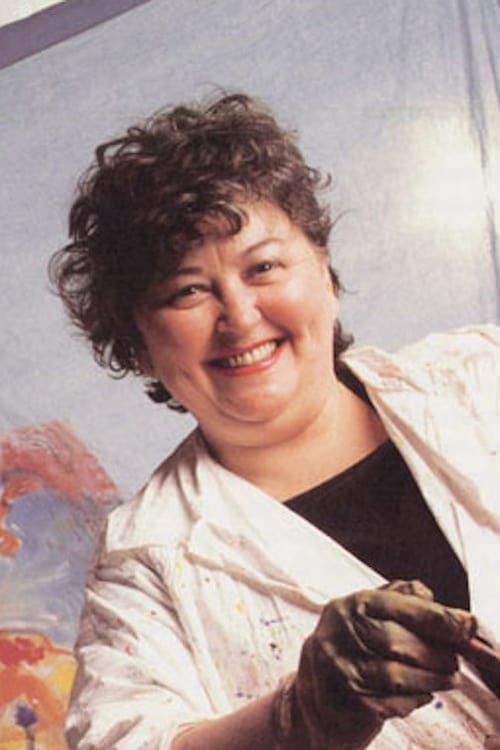
Joyce Wieland
Рождение : 1930-06-30, Toronto, Canada
Смерть : 1998-06-27
История
Joyce Wieland (1931-1998) was an experimental filmmaker and artist, whose work challenged and bridged boundaries among avant garde film factions of her time. Her works introduced a kind of manual manipulation of the filmstrip that inscribed an explicitly female craft tradition into her films, while also playing with the facticity of photographed images. Wieland's output was small, but received considerable attention in comparison to other female avant garde filmmakers of her time. As both a gallery artist and a filmmaker, Wieland was able to crossover between those realms and garner attention and support in both.
In 1963 Wieland and Snow moved to New York where they lived for ten years. She attracted critical recognition of her work but eventually moved back to Toronto. Wieland later divorced Snow and kept a low profile until her death in 1998 from Alzheimer's disease. She was made an Officer of the Order of Canada in 1982.

Herself
A serendipitous encounter with a younger artist gives legendary Canadian art icon Michael Snow the opportunity to reflect on his life and career.

Considered one of Canada's most important women artists of the second half of the 20th century, Joyce Wieland's art embodies the essence of her homeland, feminism, and ecology. Artist on Fire: Joyce Wieland captures the vibrant spirit of this painter, collagist, quilt maker, and filmmaker. In the early '70s, Wieland was involved in filmmaking, producing movies with a political message. In her 30-year career, she worked in a variety of mediums, including cloth, pastels, colored pencil, oils, bronze, and watercolor. Her works and her influence are examined in this detailed video portrait.

Director
"The film [Birds at Sunrise] was originally photographed in 1972. Birds from my window were filmed during the winter, through to the spring, with the early morning light. I became caught up in their frozen world and their ability to survive the bitter cold. I welcomed their chirps and their songs which offered life and hope for spring. In 1984 I was part of a cultural exchange between Canada and Israel. During my visit my unfinished movie came to mind. A connection was established in my mind -- so that the suffering of the birds became, in a sense, symbolic of the Jews and their survival through suffering. [...]" -- Joyce Wieland

Joyce Wieland: “Hollis and I came back to Toronto on holiday in the summer of '67. We were staying at a friend's house. We worked our way through the city and eventually made it to the island. We followed each other around. We enjoyed ourselves. We said we were going to make a film about each other - and we did”. A & B in Ontario was completed eighteen years after the original material was shot. After Frampton's death, the film was assembled by Wieland into a cinematic dialogue in which the collaborators shoot each other with cameras.

Director
Joyce Wieland: “Hollis and I came back to Toronto on holiday in the summer of '67. We were staying at a friend's house. We worked our way through the city and eventually made it to the island. We followed each other around. We enjoyed ourselves. We said we were going to make a film about each other - and we did”. A & B in Ontario was completed eighteen years after the original material was shot. After Frampton's death, the film was assembled by Wieland into a cinematic dialogue in which the collaborators shoot each other with cameras.

Director
Set in 1918 Ontario, The Far Shore employs both melodramatic conventions and experimental formal strategies to tell the tale of Eulalie, a Quebecoise woman, and her love affair wit Tom McLeod (a thinly veiled fictionalization of Canadian painter Tom Thomson). Married to a Toronto engineer, Eulalie finds life with him oppressive. Together she and Tom escape to the wilds of Northern Ontario, where they enjoy a brief idyll before being hunted down by her jealous husband. In its narrative and symbolism, The Far Shore deftly explores tensions between women and men, nature and industry, French and English, and art and commerce.
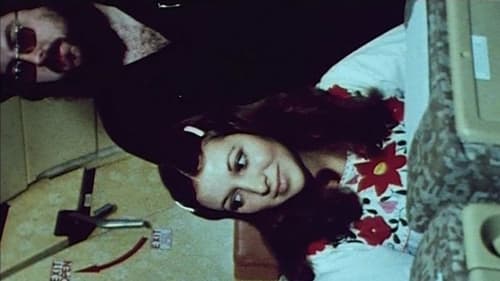
Described (rather cheekily) by director Michael Snow as a musical comedy, this deft probing of sound/image relationships is one of his wittiest, most entertaining and philosophically stimulating films. In his words, the film “derives its form and the nature of its possible effects from its being built from the inside, as it were, with the actual units of such a film, i.e. the frame and the recorded syllable. Thus its ‘dramatic’ element derives not only from a representation of what may involve us generally in life but from considerations of the nature of recorded speech in relation to moving light-images of people.’”

Director
About a strike in which women are involved, but told in a very different way.

Director
We do not actually see Pierre Vallieres, we see only his lips, his teeth, as he talks in French. English subtitles translate what he says. He speaks slowly and clearly, and tells about the Quebec people.

Zorns Lemma is a 1970 American structuralist film by Hollis Frampton. It is named after Zorn's lemma (also known as the Kuratowski–Zorn lemma), a proposition of set theory formulated by mathematician Max Zorn in 1935. Zorns Lemma is prefaced with a reading from an early grammar textbook. The remainder of the film, largely silent, shows the viewer an evolving 24-part "alphabet" (where i & j and u & v are interchanged) which is cycled through, replaced and expanded upon. The film's conclusion shows a man, woman and dog walking through snow as several voices read passages from On Light, or the Ingression of Forms by Robert Grosseteste.

Director
A cat eats its methodical way through a polymorphous fish.
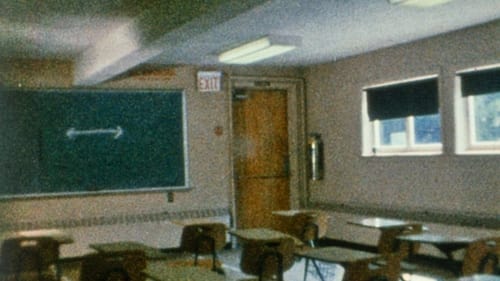
A camera moves back and forth at an increasing pace. Back and forth, back and forth...

Sound
The film consists primarily of degraded footage of landscapes shot from vehicles moving across the country; meanwhile, 537 computer-generated permutations of the film’s title appear like subtitles—the letters are scrambled over and over again, undermining the meaning of Pierre Trudeau's infamous motto.

Editor
The film consists primarily of degraded footage of landscapes shot from vehicles moving across the country; meanwhile, 537 computer-generated permutations of the film’s title appear like subtitles—the letters are scrambled over and over again, undermining the meaning of Pierre Trudeau's infamous motto.

Director of Photography
The film consists primarily of degraded footage of landscapes shot from vehicles moving across the country; meanwhile, 537 computer-generated permutations of the film’s title appear like subtitles—the letters are scrambled over and over again, undermining the meaning of Pierre Trudeau's infamous motto.

Music
The film consists primarily of degraded footage of landscapes shot from vehicles moving across the country; meanwhile, 537 computer-generated permutations of the film’s title appear like subtitles—the letters are scrambled over and over again, undermining the meaning of Pierre Trudeau's infamous motto.

Producer
The film consists primarily of degraded footage of landscapes shot from vehicles moving across the country; meanwhile, 537 computer-generated permutations of the film’s title appear like subtitles—the letters are scrambled over and over again, undermining the meaning of Pierre Trudeau's infamous motto.

Writer
The film consists primarily of degraded footage of landscapes shot from vehicles moving across the country; meanwhile, 537 computer-generated permutations of the film’s title appear like subtitles—the letters are scrambled over and over again, undermining the meaning of Pierre Trudeau's infamous motto.

Director
The film consists primarily of degraded footage of landscapes shot from vehicles moving across the country; meanwhile, 537 computer-generated permutations of the film’s title appear like subtitles—the letters are scrambled over and over again, undermining the meaning of Pierre Trudeau's infamous motto.

An unreleased diary film shot during the Fairleigh-Dickinson Artist Seminar simultaneous to the production of Back and Forth by Michael Snow.

Director
You see nothing but a white, crystal white plate, and water dripping into the plate, and you hear the sound of the water dripping. The film is ten minutes long.
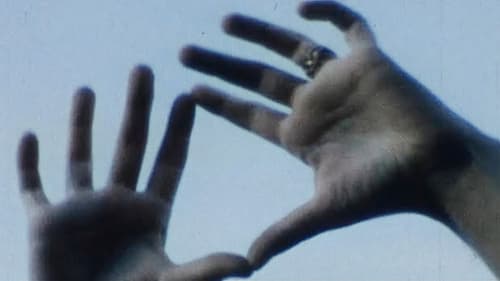
Love's Labor
Ken Jacobs’s most elusive and mysterious film is at once an allegory of movie-making, a demonstration of 8mm versatility, and a celebration of a now vanished neighborhood beneath the Brooklyn Bridge.

The movie takes a rather negative look at things despite the fact that it was shot in reversal film. It depicts the turbulent relationships of disturbed individuals existing on various levels of an apartment house. Donna Kerness and her husband Hopeton Morris are lurid together and they are also pretty lurid when they're alone.

The rising moon is the main theme in this short movie of three people and an animal going about their nocturnal rituals. This movie is evidently part three of my trilogy that started with HOLD ME WHILE I'M NAKED and ECLIPSE OF THE SUN VIRGIN. It evidently is, since part three never really came out. This seems to look like it could be part three. — GK (anthologyfilmarchives.org)

Director
“This film is against the corporate military industrial structure of global village.”

Experimental short where a camera turns over into a small apartment with a woman and a cat.

Wavelength consists of almost no action, and what action does occur is largely elided. If the film could be said to have a conventional plot, this would presumably refer to the three “character” scenes. In the first scene two people enter a room, chat briefly, and listen to “Strawberry Fields Forever” on the radio. Later, a man (played by filmmaker Hollis Frampton) enters inexplicably and dies on the floor. And last, the female owner of the apartment is heard and seen on the phone, speaking, with strange calm, about the dead man in her apartment whom she has never seen before.

Director
First shown on January 30, 1967, FOR LIFE AGAINST THE WAR was an open-call, collective statement from American independent filmmakers disparate in style and sensibility but united by their opposition to the Vietnam War. Part of the protest festival Week of the Angry Arts, the epic compilation film incorporated minute-long segments which were sent from many corners of the country, spliced together and projected. The original presentation of the works was more of an open forum with no curation or selection, and in 2000 Anthology Film Archives preserved a print featuring around 40 films from over 60 submissions.

Director
"The whole film are non-art portraits of people in which they do what they want with this hat – and therefore, act or stand in front of my camera. It’s only love: therefore it can’t harm you". Joyce Wieland.

Director
Handtinting, a five-minute silent study of young girls dancing, swimming, and observing one another by Joyce Wieland, […] has a quality that is reminiscent of cognitive dilemmas in some of her other films but that has few counterparts in avant-garde cinema of the sixties.

Director
The film 1933 made between 1967 and 1968 offers a street scene shot in New York City in the late 1960s from a loft window on the second floor.

Director
A day at the Beach, at the Sea, at the Sky and at the Sailboats.

In this "fourteen-part drill for the camera," Frampton created a portrait gallery of his art-world friends engaging in a variety of ordinary activities.
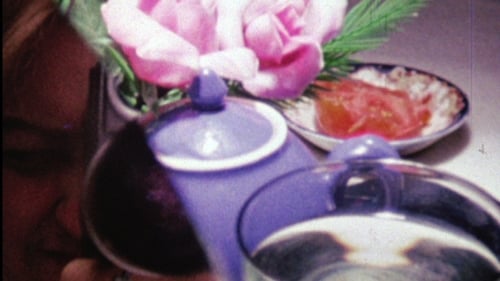
"I decided to make a film at my kitchen table, there is nothing like knowing my table. The high art of the housewife. You take prisms, glass, lights and myself to it. 'The Housewife is High.' Water Sark is a film sculpture, being made while you wait."

Director
"I decided to make a film at my kitchen table, there is nothing like knowing my table. The high art of the housewife. You take prisms, glass, lights and myself to it. 'The Housewife is High.' Water Sark is a film sculpture, being made while you wait."

Director
Constructed from found and stock footage, Barbara’s Blindness is a meditation on vision and adversity, drawing humour and pathos from a moralising educational film.

Director
In a way a portrait of Dave Shackman with the American flag. The ending is a stop-motion animation of a set table with food moving and swirling and finally gathering together in a ball. Looking back at the film, the animation sequence seems to foreshadow Dave Shackman’s early death.

Co-Director
A cutout of a woman's silhouette is displayed in many locations while a free jazz soundtrack is heard. The jazz musicians will pose later for the camera in a studio.

Director
Filmed in Joyce Wieland and Michael Snow’s loft in New York, the film covers a day of friends visiting, writing and drawing from noon of one day to dawn the next day.

Director
Patriotism, Part One depicts an army of phallic, bun-clad wieners marching on a vulnerable sleeping white male body, naked save for a sheet.

Director
One of Joyce Wieland's earliest works, shot in 8mm and finally blown-up to 16mm, “Larry’s Recent Behaviour” has been described by Simon Field as an "irreverent and wilfully juvenile examination" of a nasty habit that Larry has recently acquired.










